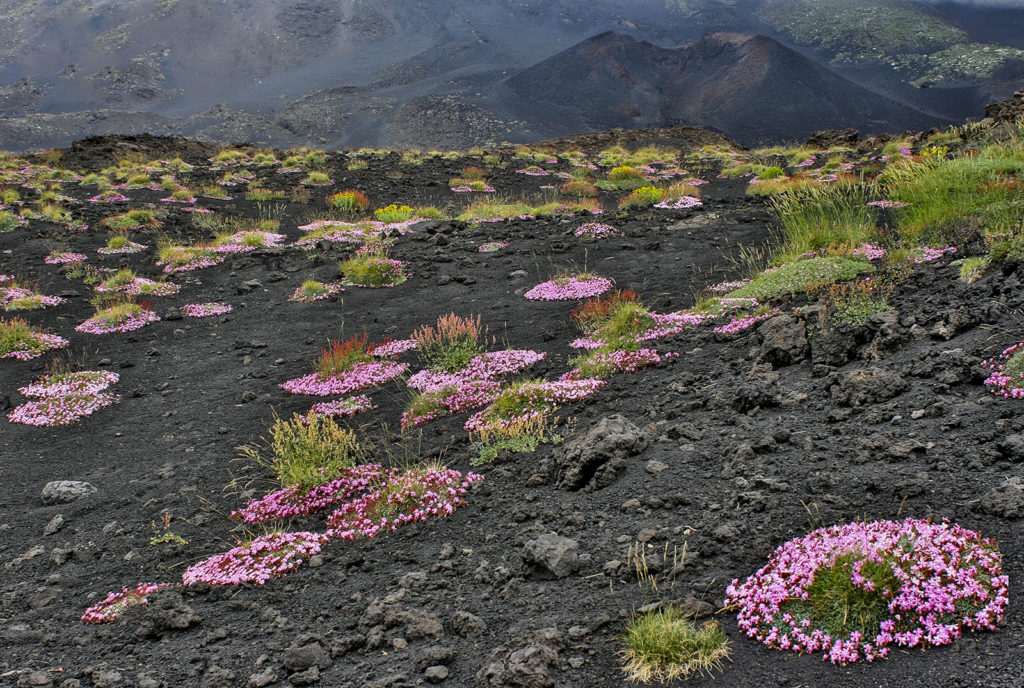The short horizontal distance with which Etna reaches an altitude of almost 3400 metres means it is home to many different microclimates and environments, from maritime to mountain to alpine, favoured by the excellent
fertility of the volcanic soil
. This encourages the presence of numerous plant species, from trees and shrubs to grasses and the astragalus siculus, often populated by species with intensely coloured flowers in the favourable seasons. The higher they are, the plants become smaller and smaller until they are no more, and the active volcano takes over.
 Plant life at higher altitudes is populated by highly specialised organisms, which have had to adapt to adverse weather conditions and the destructive action of lava.
Plant life at higher altitudes is populated by highly specialised organisms, which have had to adapt to adverse weather conditions and the destructive action of lava.
These very plants are the most valuable species of Etna’s flora. Many are endemic, meaning they are not found anywhere else on earth.
On the slopes of the Etna massif, dotted with large and small towns, the landscape appears to have been strongly modified by the prevalence of agricultural activity. This area is called “thermo-Mediterranean” and consists of an olive-green mastic shrubland. At higher altitudes, the dark green of the evergreen holly oak woods, an area called “meso-Mediterranean”, contrasts with the chestnut and oak woods of the “supra-Mediterranean”; they are bare in winter, turn green in summer and take on the typical seasonal colours in autumn. In the Mediterranean montane ecosystem, the woods are dominated by fascinating beech trees with their unmistakable reddish-brown colour in autumn and by birch, a plant with a characteristic white bark often lacerated by darker incisions.